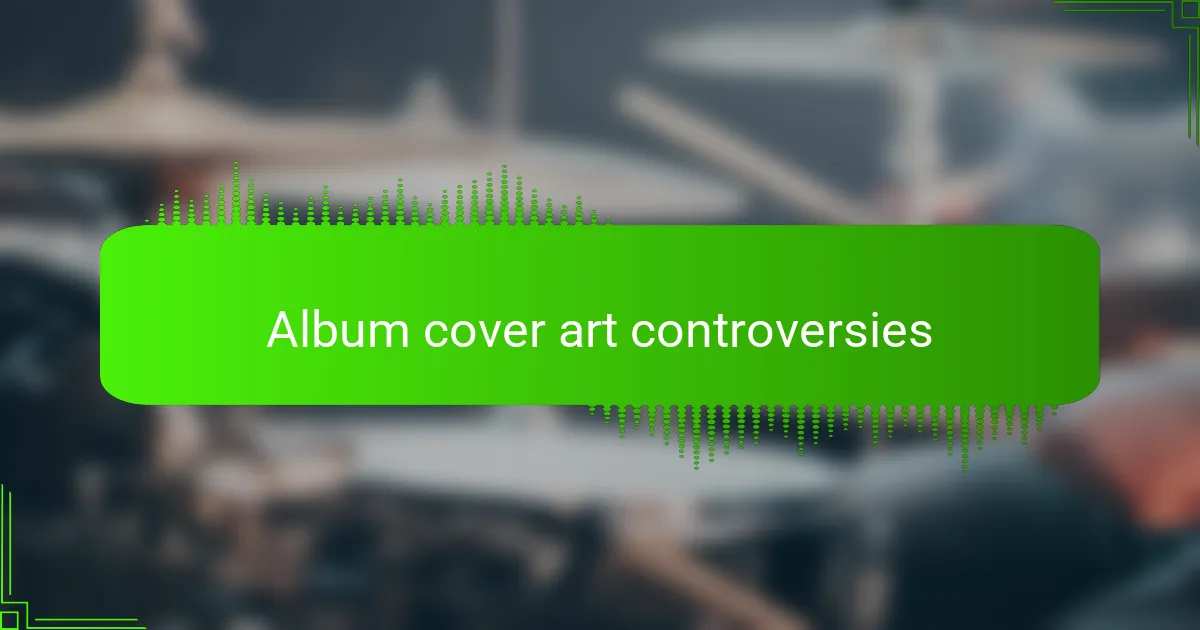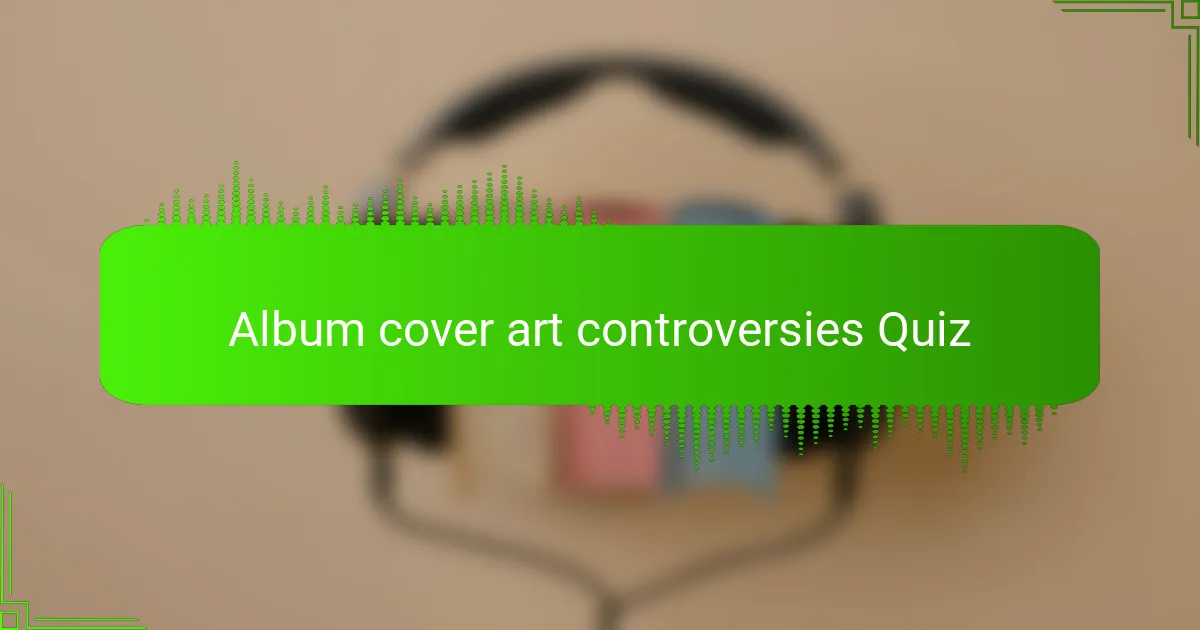
Quiz Completed Successfully!
Congratulations on completing the quiz on album cover art controversies! We hope you enjoyed exploring the fascinating world where music meets visual expression. Each question aimed to deepen your understanding of how album covers can spark debate, provoke thought, and sometimes even challenge societal norms.
Throughout the quiz, you may have discovered that album cover art is not just about aesthetics. It carries significant meaning and can reflect cultural shifts, artistic vision, and even political statements. The power of visual art in music extends beyond mere packaging; it’s an integral part of storytelling in the industry.
If you’re eager to learn more, we invite you to check out the next section on this page. Here, you’ll find a wealth of information on album cover art controversies, including notable examples and the artists behind them. Expanding your knowledge on this topic can enrich your appreciation for both music and the visual arts that accompany it.

Album cover art controversies
The Role of Album Cover Art in Music Marketing
Album cover art serves as a visual representation of an artist’s work and brand. It plays a crucial role in marketing by capturing potential listeners’ attention. Artists like Kanye West and The Beatles have employed striking cover art to convey themes and emotions linked to their music. The image often becomes iconic, influencing popular culture and the aesthetics of music consumption.
Notable Controversies Surrounding Iconic Album Covers
The Impact of Censorship on Album Cover Art
Censorship heavily influences album cover art, shaping what artists can present visually. For instance, some retailers have refused to stock albums with explicit content. This was evident with the original cover of Trent Reznor’s Nine Inch Nails’ “The Downward Spiral,” which was altered for store displays. Censorship often sparks debates about artistic freedom versus societal standards.
Fan Reactions and Backlash Over Album Cover Changes
When artists alter or replace their album covers, fan backlash can be significant. Taylor Swift’s updated cover for “1989” faced mixed reactions from her fanbase. Fans often feel a deep personal connection to original art, leading to disappointment or anger over changes. This dynamic illustrates the emotional investment fans have in album aesthetics.
The Evolution of Digital Album Art and Its Controversies
The transition to digital formats has altered album cover art, creating new controversies. Platforms like Spotify and Apple Music require specific dimensions, leading to creative constraints. Artists like Billie Eilish face challenges in portraying their themes in limited formats. Consequently, the evolution of digital art introduces discussions about accessibility versus artistic expression.
What are some notable album cover art controversies?
Notable album cover art controversies include the 1987 “The Velvet Underground & Nico,” which featured a banana image designed by Andy Warhol. Critics found it provocative. Another example is the 1990 cover for “2 Live Crew’s As Nasty As They Wanna Be,” which led to legal challenges due to its explicit artwork. The Beatles faced backlash for “Yesterday and Today” in 1966, featuring a trunk of dismembered dolls, leading to its recall and altered cover.
How has social media influenced album cover art controversies?
Social media has amplified album cover art controversies by allowing immediate reactions. Artists like Kanye West faced swift backlash for provocative imagery, such as his “Yeezus” cover. Platforms like Twitter and Instagram enable direct fan interaction, making public opinion more visible. Consequently, controversies can escalate quickly, forcing artists or record labels to respond.
Where can fans find detailed analyses of album cover art controversies?
Fans can find detailed analyses of album cover art controversies in online music magazines such as Pitchfork, NME, and Rolling Stone. These publications frequently publish articles discussing artistic intent and public reception. Additionally, music blogs and dedicated art criticism sites often explore the context and impact of controversial album covers.
When did album cover art start becoming a point of controversy?
Album cover art began becoming a point of controversy in the 1960s, particularly with emerging counterculture movements. The Beatles’ “Yesterday and Today” in 1966 sparked debate over its shocking imagery. The rise of rock ‘n’ roll coincided with increasingly provocative visuals, pushing societal boundaries and prompting backlash from conservative groups.
Who are the most controversial artists regarding album cover art?
Artists like Madonna and Eminem have consistently sparked controversy over their album covers. Madonna’s “Like a Prayer” in 1989 featured religious imagery that drew criticism from the Catholic [censured]. Eminem’s “The Marshall Mathers LP” included provocative imagery that led to debates on censorship and freedom of expression. These artists exemplify how album covers can ignite heated discussions.

